WAILUA — A pair of fledgling ‘a‘o, or Newell’s shearwaters, were honored guests poised to leave the annual Ho‘opomaika‘i ‘ia na Manu ‘A‘o Tuesday with students from Island School participating with Kumu Sabra Kauka, and invited guests including Capt. Brett Stevenson of the U.S. Navy’s Pacific Missile Range Facility at Barking Sands and other selected individuals from PMRF, members of the Kaua‘i County Council and the county’s Department of Parks and Recreation.
The occasion was the annual release into the wild of injured or downed birds.
“The birds have an important role to play on our islands,” said Taylor Agustin, one of the participating students. “They were used by navigators to find their way home.”
The traditional cultural release of the endangered seabirds, coordinated between the Save Our Shearwaters program and the Kaua‘i Endangered Seabird Recovery Program, is symbolic of the second life for the seabirds, such as the Newell’s shearwater and u‘au, or Hawaiian petrel, receive after being rescued from falling after being confused by bright lights, especially during the fledging period of Sept. 15 through Dec. 15 when light attraction becomes a particular concern for ‘a‘o.
“As the next generation of leaders on Kaua‘i, today’s keiki will be responsible for protecting these seabirds,” said Dilek Sahin, KESRP coordinator. “When they see young ‘a‘o for themselves, they form a personal connection that will last a lifetime.”
Prior to the cultural release, the KESRP staff went to various schools to give presentations on Kaua‘i’s endangered seabirds that included fun facts about the island’s three endangered seabirds, and why Kaua‘i is such an important place for them, the island being home to an estimated 90 percent of the world population of the ‘a‘o.
Every year, SOS rehabilitates both ‘a‘o and u‘au that face a variety of threats during their flight from their mountain burrows to the ocean. These include power-line collisions and being attracted to artificial lights that the birds confuse for the moon they use to navigate their way to the open ocean.
KESRP studies have shown that, between 1993 and 2013, Kaua‘i’s population of ‘a‘o declined by 94 percent, and the u‘au by 78 percent.
Aine Conway, one of the students participating in the release, said, “We should protect ‘a‘o because all birds are welcome, and no bird should have to go extinct.”
During the fledging period, young ‘a‘o leave their burrows for the first time and head out to sea, a state Department of Land and Natural Resources release states. Often, after leaving their birthplaces in remote mountain areas, the birds are attracted to bright artificial lights, end up circling them until they fall, exhausted and grounded.
Once grounded, they have difficulty taking off, and if not rescued by people, the young birds fall prey to cats and dogs, or are run over by cars. Many are never found, the DLNR said.
“We should protect ‘a‘o because they lay only one egg a year,” said Sophia Kua, another of the participating students.
The DLNR is asking everyone to keep an eye out for fallen birds during this time of the year.
If found, the birds should be carefully collected and placed in one of the aid stations located at the Kaua‘i fire stations and other locations. These rescued birds are collected by the SOS staff, rehabilitated and released.
With funding predominantly by the Kaua‘i Island Utility Cooperative, SOS, initiated by the DLNR Division of Forestry and Wildlife, is an unincorporated nonprofit association. The KESRP is a joint project between the DLNR Division of Forestry and Wildlife and the Pacific Co-operative Studies Unit of the University of Hawai‘i.
•••
Dennis Fujimoto, staff writer and photographer, can be reached at 808-245-0453 or dfujimoto@thegardenisland.com.


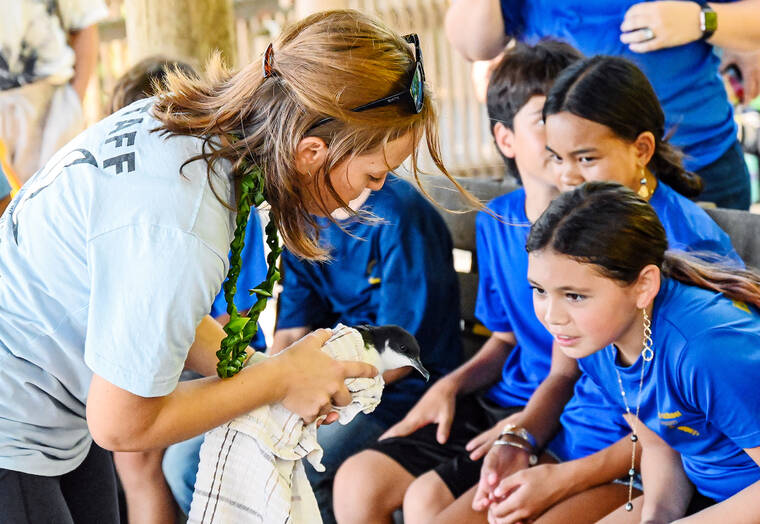
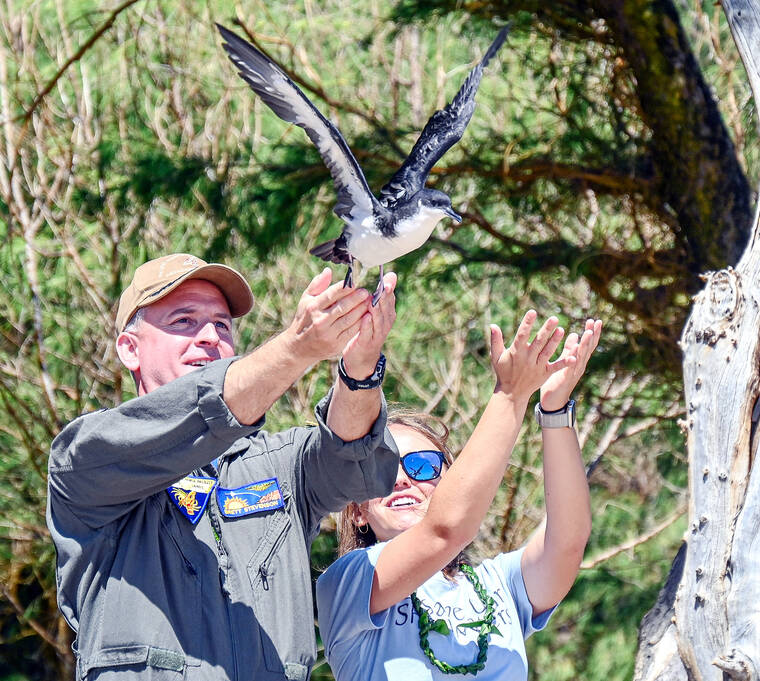
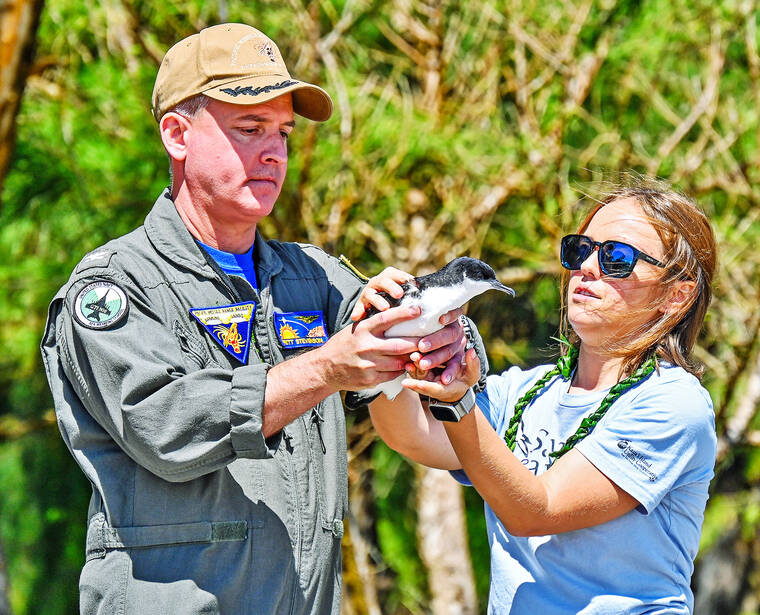
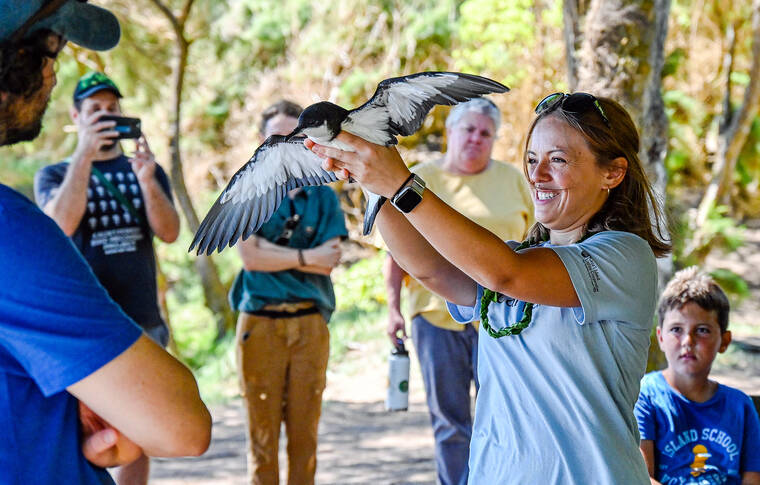
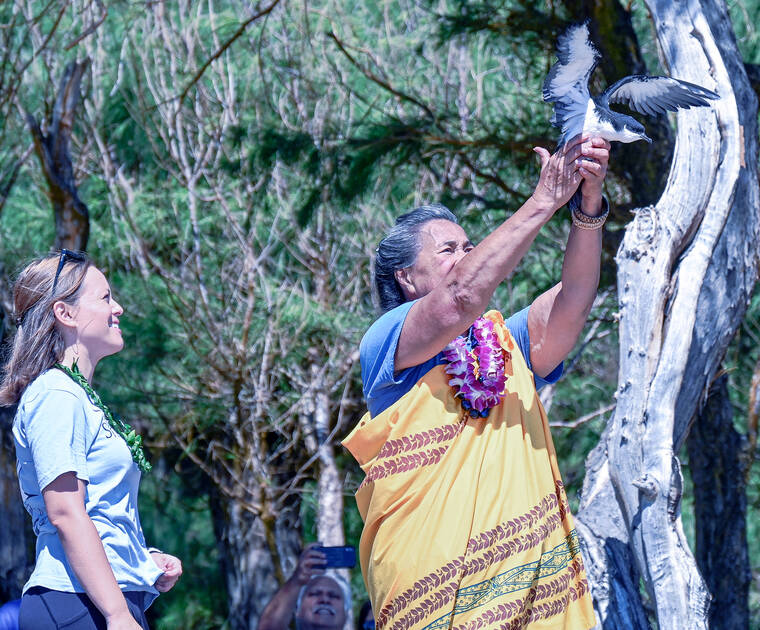
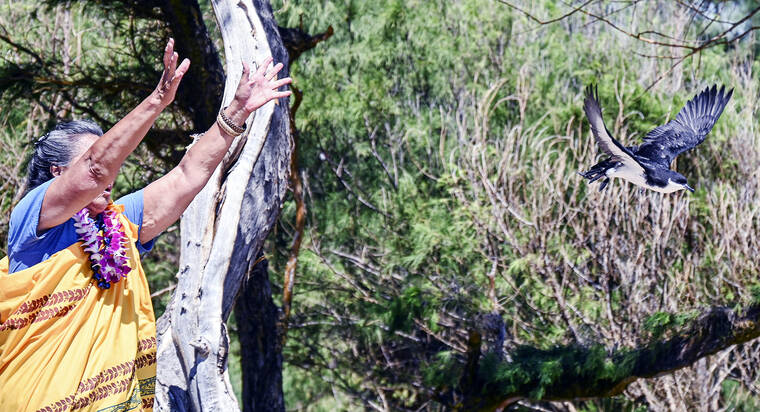
Excellent work you are all doing!!